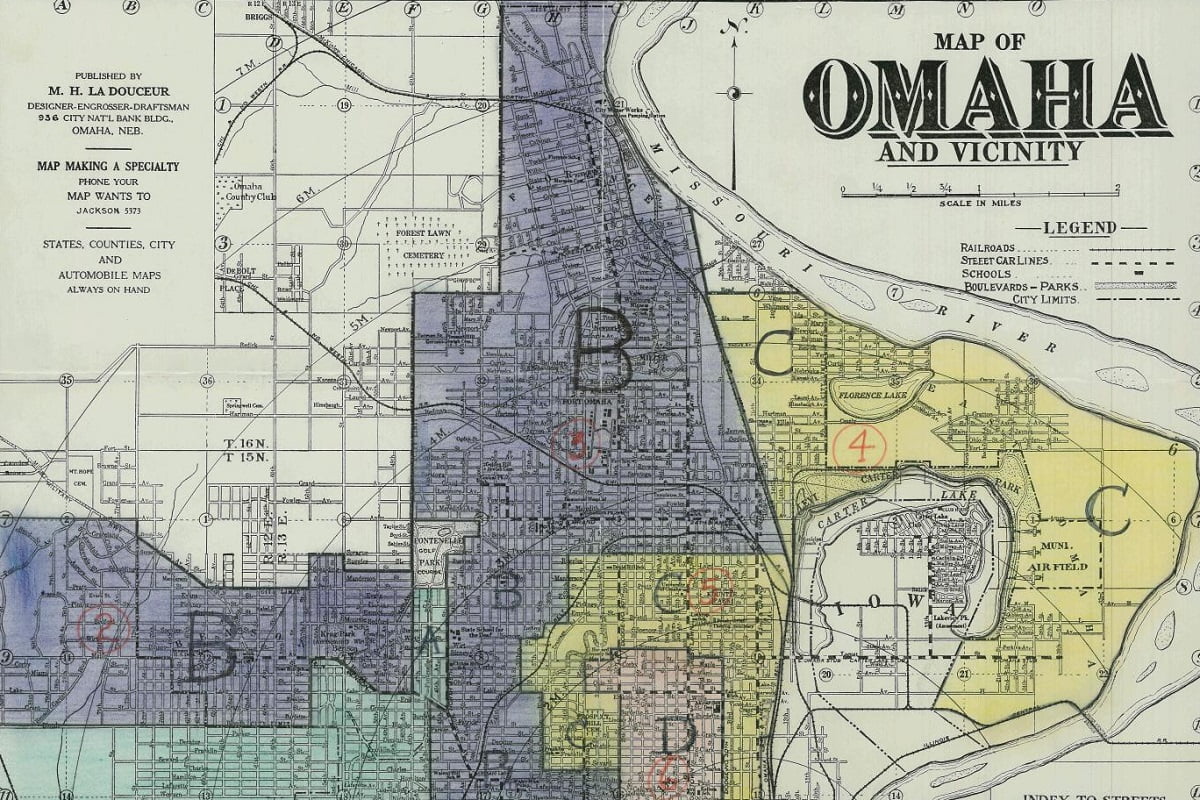Omaha, a city known for its vibrant culture and diverse community, has a history of over a century. However, like many American cities, Omaha has grappled with racial segregation, redlining, and uneven housing development. Understanding this history is crucial to address the disparities that persist here today. In this blog post, we will delve into Omaha’s first 100 years of development, the impact of redlining and the streetcar line on housing, and how residents can take informed action to drive positive change.
This blog builds upon information from Terri Crawford, Steve Jensen, and Preston Love, Jr. at From the Ground Up on Sept. 12, 2023.
A Glimpse into Omaha’s Development Over a Century
Omaha’s development can be traced back to the mid-19th century when it was a strategic hub for trade and transportation due to its location along the Missouri River. Over the years, the city experienced rapid growth and transformation. During the late 19th and early 20th centuries, the town expanded with the advent of the Union Pacific Railroad and the meatpacking industry. This growth led to a surge in the city’s population and increased demand for housing and infrastructure.
However, this growth was unevenly distributed. Neighborhoods started to evolve, and disparities emerged, influenced by socioeconomic factors and discriminatory practices.
The Dark Stain of Redlining and its Effects on Housing
One of the most detrimental practices affecting housing development in Omaha was redlining, a discriminatory practice by which certain neighborhoods were deemed unfit for investment or loans based on the racial composition of their residents. In the 1930s, the Home Owners’ Loan Corporation (HOLC) and the Federal Housing Administration (FHA) employed redlining, effectively denying financial assistance to residents in predominantly Black and minority neighborhoods.
Omaha was no exception to this discriminatory practice. African-American neighborhoods were often marked as high-risk areas, restricting their access to mortgages and loans. This reinforced racial segregation and hindered economic development in these communities, perpetuating a cycle of poverty and limited resources.
The Impact of the Streetcar Line
The streetcar line in Omaha played a significant role in shaping the city’s development. Initially, streetcar lines were created to connect various parts of the city, promoting urban expansion and enabling individuals to commute to work and other areas quickly. However, the planning and layout of these streetcar lines were not without biases.
Racial segregation often influenced the placement and development of streetcar lines, further isolating minority communities. These lines inadvertently played a role in determining property values and access to amenities, exacerbating the disparities in housing and resources.
Taking Informed Action: A Call for Change
Understanding this historical context is essential for creating a more equitable and inclusive present and future for Omaha. Here are some steps residents can take to make a difference:
1. Educate Yourself and Others: Learn about the history of redlining and its effects on Omaha. Share this information with friends, family, and community members to raise awareness.
2. Advocate for Equitable Policies: Support policies that promote fair housing, access to loans, and equal opportunities for all residents. Encourage local lawmakers to address historical injustices and implement policies that level the playing field for everyone. Learn how to give testimony at a public hearing. One Omaha can also help support your advocacy.
3. Support Community Organizations: Volunteer your time or donate to local organizations working to fight housing disparities and promote inclusivity in housing. Community involvement is a powerful tool for change.
4. Promote Inclusivity and Diversity: Advocate for diverse representation in decision-making bodies, businesses, and community organizations. Diversity in leadership fosters understanding and inclusive policies.
5. Engage in Dialogue: Engage in open conversations about race, housing, and equity within your community. Actively listen to others’ experiences and perspectives to build empathy and understanding.
Omaha’s history holds valuable lessons that can guide us toward a more just and inclusive future. By acknowledging the past and taking proactive steps, we can work together to break down barriers and create a city where everyone has an equal opportunity to thrive.
Register for From the Ground Up, One Omaha’s community speaker series addressing the issue of housing development in Omaha and how residents like you can get involved in shaping your city.
Additional Resources
Undesign the Redline Exhibit at UNO
A History of Streetcars in North Omaha
Report Housing Discrimination – City of Omaha
A History of Redlining in North Omaha

